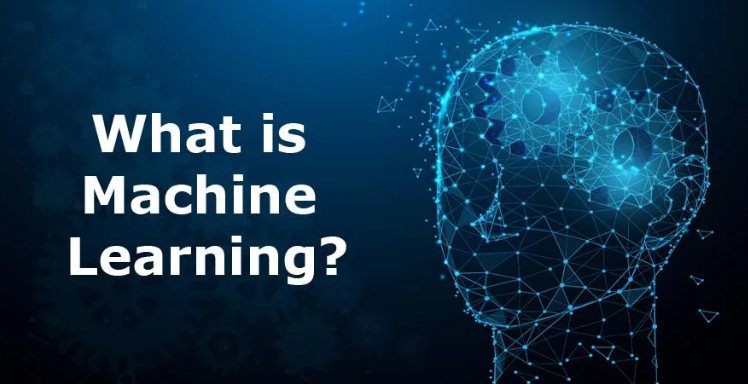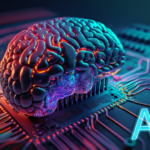What is Machine Learning?
What is machine learning?” It’s a question that opens the door to a new era of technology—one where computers can learn and improve on their own, much like humans. Imagine a world where computers don’t just follow strict rules but can learn from data and experiences. This is the essence of machine learning.
From suggesting new shows on streaming services based on your viewing history to enabling self-driving cars to navigate safely, machine learning is behind these advancements. It’s not just about technology;
it’s about reshaping how computers interact with us and understand the world around them. As artificial intelligence continues to evolve, machine learning remains at its core, revolutionizing our relationship with technology and paving the way for a more connected future.
Machine learning is a branch of artificial intelligence that enables algorithms to uncover hidden patterns within datasets, allowing them to make predictions on new, similar data without explicit programming for each task.
Traditional machine learning combines data with statistical tools to predict outputs, yielding actionable insights. This technology finds applications in diverse fields such as image and speech recognition, natural language processing, recommendation systems, fraud detection, portfolio optimization, and automating tasks.
For instance, recommender systems use historical data to personalize suggestions. Netflix, for example, employs collaborative and content-based filtering to recommend movies and TV shows based on user viewing history, ratings, and genre preferences. Reinforcement learning further enhances these systems by enabling agents to make decisions based on environmental feedback, continually refining recommendations.
Machine learning’s impact extends to autonomous vehicles, drones, and robots, enhancing their adaptability in dynamic environments. This approach marks a breakthrough where machines learn from data examples to generate accurate outcomes, closely intertwined with data mining and data science.
Most people don’t realize that machine learning, which is a type of artificial intelligence (AI), was born in the 1950s. Arthur Samuel wrote the first computer learning program in 1959, in which an IBM computer got better at the game of checkers the longer it played. Fast-forward to today, when AI isn’t just cutting-edge technology; it can lead to high-paying and exciting jobs.
Machine learning engineers are in high demand because, as upsaily MLE Tomasz Dudek says, neither data scientists nor software engineers have precisely the skills needed for the field of machine learning. Companies need professionals who are fluent in both of those fields yet can do what neither data scientists nor software engineers can. That person is a machine learning engineer.
The terms “artificial intelligence,” “machine learning” and “deep learning” are often thrown about interchangeably, but if you’re considering a career in AI, it’s important to know how they’re different.
According to the Oxford Living Dictionaries, artificial intelligence is “the theory and development of computer systems able to perform tasks that normally require human intelligence, such as visual perception, speech recognition, decision-making, and translation between languages.” Although they might be called “smart,” some AI computer systems don’t learn on their own; that’s where machine learning and deep learning come in.
How machine learning algorithms work
Machine Learning works in the following manner
A machine learning algorithm works by learning patterns and relationships from data to make predictions or decisions without being explicitly programmed for each task. Here’s a simplified overview of how a typical machine learning algorithm works:
With machine learning, computer systems are programmed to learn from data that is input without being continually reprogrammed. In other words, they continuously improve their performance on a task—for example, playing a game—without additional help from a human.
Machine learning is being used in a wide range of fields: art, science, finance, healthcare—you name it. And there are different ways of getting machines to learn. Some are simple, such as a basic decision tree, and some are much more complex, involving multiple layers of artificial neural networks. The latter happens in deep learning. We’ll get to that more in a minute.
Machine learning was made possible not just by Arthur Samuel’s breakthrough program in 1959—using a relatively simple (by today’s standards) search tree as its main driver, his IBM computer continually improved at checkers—but by the Internet as well. Thanks to the Internet, a vast amount of data has been created and stored, and that data can be made available to computer systems to help them “learn.”
Machine learning with R and machine learning with Python are two popular methods used today. While we won’t be discussing specific programming languages in this article, it’s helpful to know R or Python if you want to delve more deeply into machine learning with R and machine learning with Python.
1. Data Collection:
First, relevant data is collected or curated. This data could include examples, features, or attributes that are important for the task at hand, such as images, text, numerical data, etc.
2. Data Preprocessing:
Before feeding the data into the algorithm, it often needs to be preprocessed. This step may involve cleaning the data (handling missing values, outliers), transforming the data (normalization, scaling), and splitting it into training and test sets.
3. Choosing a Model:
Depending on the task (e.g., classification, regression, clustering), a suitable machine learning model is chosen. Examples include decision trees, neural networks, support vector machines, and more advanced models like deep learning architectures.
4. Training the Model:
The selected model is trained using the training data. During training, the algorithm learns patterns and relationships in the data. This involves adjusting model parameters iteratively to minimize the difference between predicted outputs and actual outputs (labels or targets) in the training data.
5. Evaluating the Model:
Once trained, the model is evaluated using the test data to assess its performance. Metrics such as accuracy, precision, recall, or mean squared error are used to evaluate how well the model generalizes to new, unseen data.

What Is Deep Learning?
Some consider deep learning to be the next frontier of machine learning, the cutting edge of the cutting edge. You may already have experienced the results of an in-depth deep learning program without even realizing it! If you’ve ever watched Netflix, you’ve probably seen its recommendations for what to watch. And some streaming-music services choose songs based on what you’ve listened to in the past or songs you’ve given the thumbs-up to or hit the “like” button for. Both of those capabilities are based on deep learning. Google’s voice recognition and image recognition algorithms also use deep learning.
Just as machine learning is considered a type of AI, deep learning is often considered to be a type of machine learning—some call it a subset. While machine learning uses simpler concepts like predictive models, deep learning uses artificial neural networks designed to imitate the way humans think and learn.
You may remember from high school biology that the primary cellular component and the main computational element of the human brain is the neuron and that each neural connection is like a small computer. The network of neurons in the brain is responsible for processing all kinds of input: visual, sensory, and so on.
With deep learning computer systems, as with machine learning, the input is still fed into them, but the info is often in the form of huge data sets because deep learning systems need a large amount of data to understand it and return accurate results. Then the artificial neural networks ask a series of binary true/false questions based on the data, involving highly complex mathematical calculations, and classify that data based on the answers received.
So although both machine and deep learning fall under the general classification of artificial intelligence, and both “learn” from data input, there are some key differences between Machine Learning and Deep Learning.
Differences Between 5 Key Machine Learning and Deep Learning
1. Human Intervention
Whereas with machine learning systems, a human needs to identify and hand-code the applied features based on the data type (for example, pixel value, shape, orientation), a deep learning system tries to learn those features without additional human intervention. Take the case of a facial recognition program.
The program first learns to detect and recognize edges and lines of faces, then more significant parts of the faces, and then finally the overall representations of faces. The amount of data involved in doing this is enormous, and as time goes on and the program trains itself, the probability of correct answers (that is, accurately identifying faces) increases. And that training happens through the use of neural networks, similar to the way the human brain works, without the need for a human to recode the program.
2. Hardware
Due to the amount of data being processed and the complexity of the mathematical calculations involved in the algorithms used, deep learning systems require much more powerful hardware than simpler machine learning systems. One type of hardware used for deep learning is graphical processing units (GPUs). Machine learning programs can run on lower-end machines without as much computing power.
3. Time
As you might expect, due to the huge data sets a deep learning system requires, and because there are so many parameters and complicated mathematical formulas involved, a deep learning system can take a lot of time to train. Machine learning can take as little time as a few seconds to a few hours, whereas deep learning can take a few hours to a few weeks!
4. Approach
Algorithms used in machine learning tend to parse data in parts, then those parts are combined to come up with a result or solution. Deep learning systems look at an entire problem or scenario in one fell swoop. For instance, if you wanted a program to identify particular objects in an image (what they are and where they are located—license plates on cars in a parking lot, for example),
you would have to go through two steps with machine learning: first object detection and then object recognition. With the deep learning program, on the other hand, you would input the image, and with training, the program would return both the identified objects and their location in the image in one result.
5. Applications
Given all the other differences mentioned above, you probably have already figured out that machine learning and deep learning systems are used for different applications. Where they are used: Basic machine learning applications include predictive programs (such as for forecasting prices in the stock market or where and when the next hurricane will hit), email spam identifiers, and programs that design evidence-based treatment plans for medical patients.
In addition to the examples mentioned above of Netflix, music-streaming services and facial recognition, one highly publicized application of deep learning is self-driving cars—the programs use many layers of neural networks to do things like determine objects to avoid, recognize traffic lights and know when to speed up or slow down.

Machine Learning and Deep Learning Future Trends
The possibilities for machine learning and deep learning in the future are nearly endless! The increased use of robots is a given, not just in manufacturing but in ways that can improve our everyday lives in both major and minor ways. The healthcare industry also will likely change, as deep learning helps doctors do things like to predict or detect cancer earlier, which can save lives.
On the financial front, machine learning and deep learning are poised to help companies and even individuals save money, invest more wisely, and allocate resources more efficiently. And these three areas are only the beginning of future trends for machine learning and deep learning. Many areas that will be improved are still only a spark in developers’ imaginations right now.
Conclusion
So hopefully this Machine Learning Vs. Deep Learning article has given you all the basics regarding machine learning versus deep learning, and a glimpse at machine learning and deep learning future trends. As you may have figured out by now, it’s an exciting (and profitable!) time to be a machine learning engineer.
In fact, according to PayScale, the salary range of a machine learning engineer (MLE) is $100,000 to $166,000. So there has never been a better time to begin studying to be in this field or deepen your knowledge base.
If you want to be a part of this cutting-edge technology, check out Simplilearn’s Deep Learning course. And if you’d like a résumé-boosting credential to further your career in AI, sign up for the Caltech’s Caltech Post Graduate Program In AI And Machine Learning.
You can also take-up the Artificial Intelligence Engineer Master’s Program in partnership with IBM. This program gives you an in-depth knowledge of Python, Deep Learning with the Tensor flow, Natural Language Processing, Speech Recognition, Computer Vision, and Reinforcement Learning.










